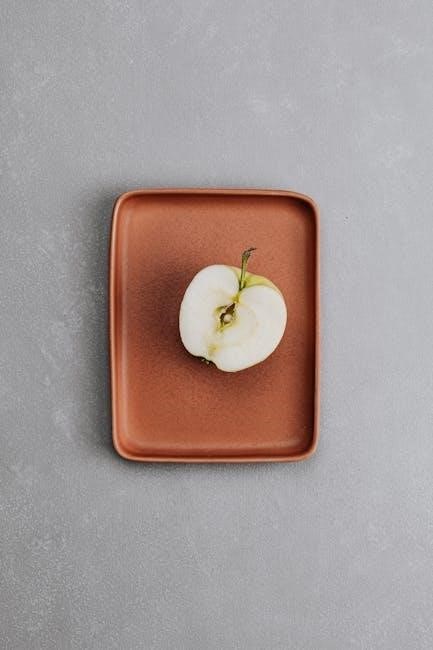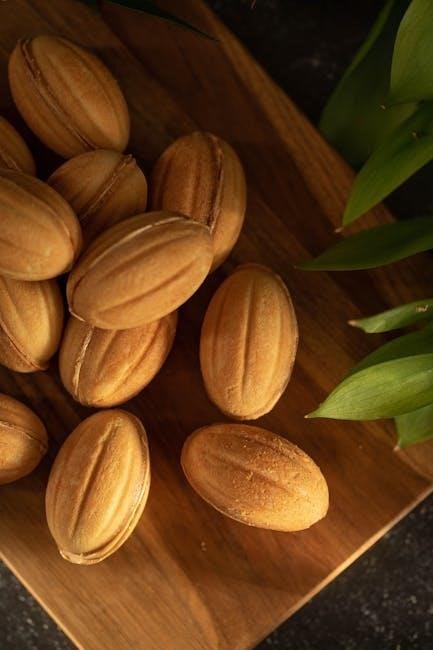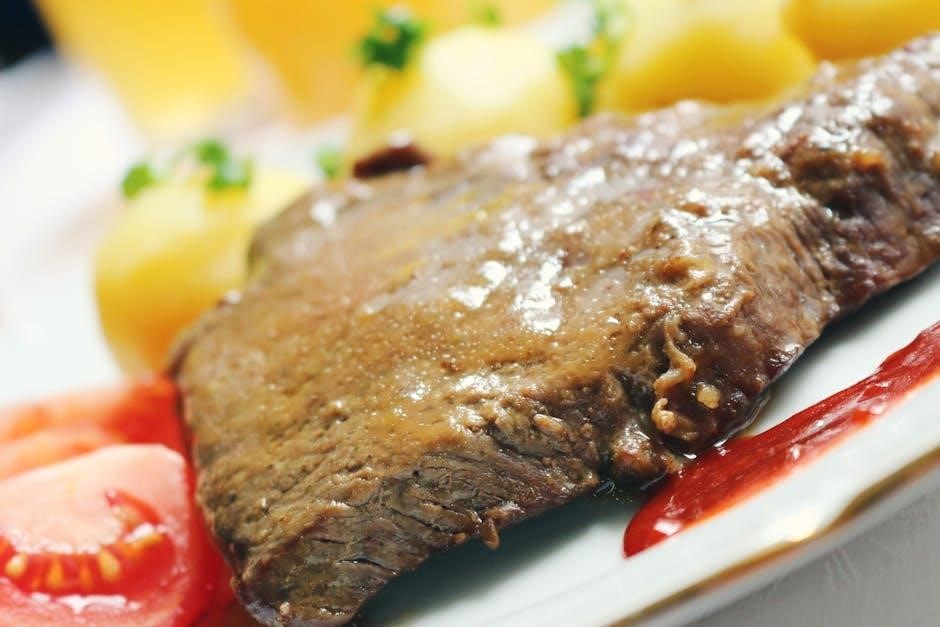Cooking ham shank is an art that transforms a flavorful cut into a tender, juicy delight. Perfect for novice and experienced cooks, it offers rich, savory results through various methods.
What is a Ham Shank?
A ham shank refers specifically to the lower part of a pig’s leg, above the hock, containing part of the femur bone surrounded by quality leg meat. It is a flavorful and juicy cut, often used for cooking hams. Available both uncooked and fully cooked, an uncooked ham shank requires extended cooking, while a pre-cooked one needs only reheating. This cut is leaner compared to other ham portions and is known for its rich, savory taste when properly prepared. Whether cured or uncured, the ham shank provides a hearty, satisfying meal, making it a popular choice for various culinary dishes.
Importance of Proper Cooking Techniques
Proper cooking techniques are essential for achieving tender and flavorful ham shanks. Due to their tough connective tissue, ham shanks require low-and-slow methods like braising or slow cooking to break down the collagen, resulting in a tender texture. Techniques like searing before slow cooking enhance flavor, while resting allows juices to redistribute, ensuring juiciness. Glazing towards the end of cooking adds a sweet and tangy crust, elevating the dish. Without proper techniques, the meat can remain tough and dry, making cooking methods crucial for a delicious outcome. These techniques not only transform the ham shank but also create a memorable dining experience.

Selecting the Right Ham Shank
Choosing the right ham shank involves selecting a firm cut with ample meat, ensuring flavor and texture. Opt for cured or uncured, depending on desired taste preferences.
Understanding Different Ham Cuts
Ham cuts vary significantly, with each offering unique characteristics. The shank, from the pig’s lower leg, is leaner and ideal for slow cooking. The butt portion, from the upper leg, is fattier and more tender. Spiral-cut hams are pre-sliced for convenience, while smoked or glazed options add distinct flavors. Cured hams are treated with salt or sugar for preservation, resulting in a firmer texture. Uncured hams are free from added preservatives, offering a cleaner taste. Understanding these cuts helps in selecting the perfect ham for your recipe, ensuring the desired texture and flavor profile for your dish.
Choosing Between Cured and Uncured Ham Shank
When selecting a ham shank, the choice between cured and uncured is crucial. Cured ham shanks are treated with salt or sugar, enhancing flavor and extending shelf life. They offer a classic, savory taste and are ideal for traditional recipes. Uncured ham shanks, free from added preservatives, provide a cleaner, more natural flavor. They are perfect for health-conscious cooks or those avoiding processed foods. Both options are versatile, but cured ham shanks are firmer and more robust, while uncured versions are softer and milder. Consider your recipe and dietary preferences to make the best choice, ensuring the desired flavor and texture for your dish.

Preparing the Ham Shank
Preparing a ham shank involves cleaning, seasoning, and creating a glaze or marinade. These steps enhance flavor and ensure a tender, juicy final dish with a rich texture.
Essential Seasonings and Marinades
Seasonings and marinades are key to enhancing the flavor of a ham shank. Common ingredients include brown sugar, mustard, garlic, and herbs like thyme or rosemary. For a sweet and tangy glaze, mix brown sugar, Dijon mustard, and honey. To add depth, marinate the ham shank in a mixture of olive oil, vinegar, and spices for several hours or overnight. These preparations help tenderize the meat and infuse it with rich, savory notes. Proper seasoning ensures the ham shank is flavorful and moist, making it a standout dish for any meal.
Creating a Sweet and Tangy Glaze
A sweet and tangy glaze elevates the flavor of a ham shank, balancing savory and sugary notes. Mix brown sugar, honey, Dijon mustard, and apple cider vinegar for a classic glaze. Add garlic, black pepper, and spices like cinnamon or nutmeg for depth. Brush the glaze over the ham shank during the last 30 minutes of cooking to create a caramelized crust. For extra moisture, baste the meat with pan juices periodically. This glaze not only enhances flavor but also adds a visually appealing finish. Experiment with ingredients like maple syrup or orange zest for unique twists. The result is a sticky, flavorful coating that complements the tender meat perfectly, making the dish memorable and delicious.

Cooking Methods for Ham Shank
Ham shanks can be baked, braised, or slow-cooked for tender, flavorful results. Each method ensures rich flavors and fall-off-the-bone texture, perfect for a hearty, satisfying meal.
Baking in the Oven
Baking ham shanks in the oven is a straightforward method that delivers tender, flavorful results. Preheat the oven to 325°F (160°C) and place the ham shank fat side up in a roasting pan. Score the fat in a diamond pattern and season generously with salt, pepper, and your favorite spices. Cover with foil to prevent drying and bake for 1.5 to 2 hours, basting every 20 minutes. Remove foil in the last 30 minutes to crisp the exterior. Use a meat thermometer to ensure the internal temperature reaches 145°F (63°C) for safety. Rest for 10 minutes before slicing to allow juices to redistribute, ensuring a juicy and succulent final dish.
Braising for Tender Results
Braising is an excellent method for achieving tender, fall-off-the-bone ham shanks. Start by searing the meat in a hot pan to lock in flavors, then transfer it to a large Dutch oven or heavy pot. Add aromatic vegetables like onions, carrots, and celery, followed by liquid such as stock, wine, or beer, ensuring the shank is partially submerged. Cover the pot and cook on low heat for 2-3 hours, or until the meat is tender and easily shreds with a fork. Avoid boiling, as it can toughen the meat. The slow, moist heat breaks down connective tissues, resulting in a rich, flavorful dish. Serve with mashed potatoes or polenta to soak up the savory braising liquid.

Slow Cooking for Fall-Off-the-Bone Texture
Slow cooking is a foolproof method for achieving a fall-off-the-bone tender ham shank. Season the shank generously with spices and place it in a slow cooker. Add liquid such as stock, wine, or barbecue sauce to cover the bottom. Cook on low for 8-10 hours or high for 4-6 hours. The prolonged cooking breaks down the connective tissues, transforming the meat into a succulent, easily shredded texture. For enhanced flavor, refrigerate the shank overnight before cooking to allow the seasonings to penetrate deeply. Serve with the rich, flavorful sauce from the slow cooker for a hearty, comforting meal. This method ensures a tender, juicy result with minimal effort, perfect for busy home cooks.

Resting and Serving
Allow the ham shank to rest for 10-15 minutes before slicing. This ensures juices redistribute, keeping the meat tender and flavorful. Serve with pan juices as a glaze, paired with mashed potatoes, roasted vegetables, or crusty bread for a hearty meal.
Why Resting is Crucial
Resting the ham shank after cooking is essential for retaining moisture and ensuring tender results. During cooking, juices concentrate in the meat. If sliced immediately, these juices escape, making the ham dry. Resting allows the juices to redistribute evenly, enhancing flavor and texture. This step is vital for achieving a succulent, fall-off-the-bone experience. By letting the ham shank rest, you ensure a more enjoyable and flavorful meal. It’s a simple yet crucial step that elevates the quality of your dish, making it worth the wait. Proper resting guarantees a juicy, tender ham shank that impresses every time.
Serving Suggestions and Pairings
A perfectly cooked ham shank is versatile and can be served in various ways to suit any meal. Slice it thinly and serve as a main dish, accompanied by roasted vegetables or mashed potatoes. It’s also ideal for sandwiches, adding a flavorful twist to lunch. For breakfast, dice the ham and mix it into scrambled eggs or serve alongside pancakes. Pair the ham shank with tangy sides like pickles or coleslaw to balance its richness. The pan juices make an excellent glaze, drizzled over the meat or served alongside. For a comforting meal, serve it with braised greens or root vegetables. The ham shank’s hearty flavor pairs beautifully with cornbread or crusty bread for a satisfying dinner. Don’t forget to use the bone for soups or stews, adding depth to future dishes.

Frequently Asked Questions
Common questions include how long to cook a ham shank and its nutritional benefits. Cooking times vary, but it’s typically 15-20 minutes per pound. Ham shanks are rich in protein and minerals, making them a healthy, flavorful choice for meals.
How Long to Cook a Ham Shank
Cooking time for a ham shank varies based on size, method, and whether it’s cured or uncured. On average, it takes 15-20 minutes per pound in the oven at 325°F. For slow cooking, 8-10 hours on low or 4-6 hours on high yields tender results. Braising methods require about 2-3 hours on the stovetop or in the oven. Fresh ham shanks need longer cooking times, while pre-cooked ones may only require reheating. Always use a meat thermometer to ensure the internal temperature reaches 145°F for safety. Let the ham rest 10-15 minutes before slicing to retain juices and achieve the best texture.
Nutritional Benefits of Ham Shank
A ham shank is a nutrient-rich cut of meat, offering essential protein, vitamins, and minerals. It is leaner than other pork cuts, making it a healthier option for meat lovers. Ham shank is an excellent source of niacin, a B vitamin that supports energy metabolism and skin health. It also contains significant amounts of phosphorus, zinc, and iron, which are vital for bone health, immune function, and oxygen transport in the blood. When cooked properly, ham shank provides a balanced mix of nutrients, making it a satisfying and nutritious addition to meals. Opting for uncured varieties can reduce sodium intake, ensuring a healthier dietary choice. Pairing it with vegetables enhances its nutritional profile, creating a well-rounded dish.
Cooking a ham shank is a rewarding culinary experience that offers a delicious, tender, and flavorful meal. Whether baked, braised, or slow-cooked, this versatile cut transforms into a mouthwatering dish perfect for any occasion. The key to success lies in proper preparation, seasoning, and patient cooking to achieve fall-off-the-bone results. With its rich flavor and satisfying texture, a well-cooked ham shank is sure to impress. By following the tips and techniques outlined, you can create a memorable meal that combines tradition with modern twists. So, don’t hesitate to give ham shank a try—it’s a dish that promises hearty satisfaction and lasting enjoyment for you and your family.
